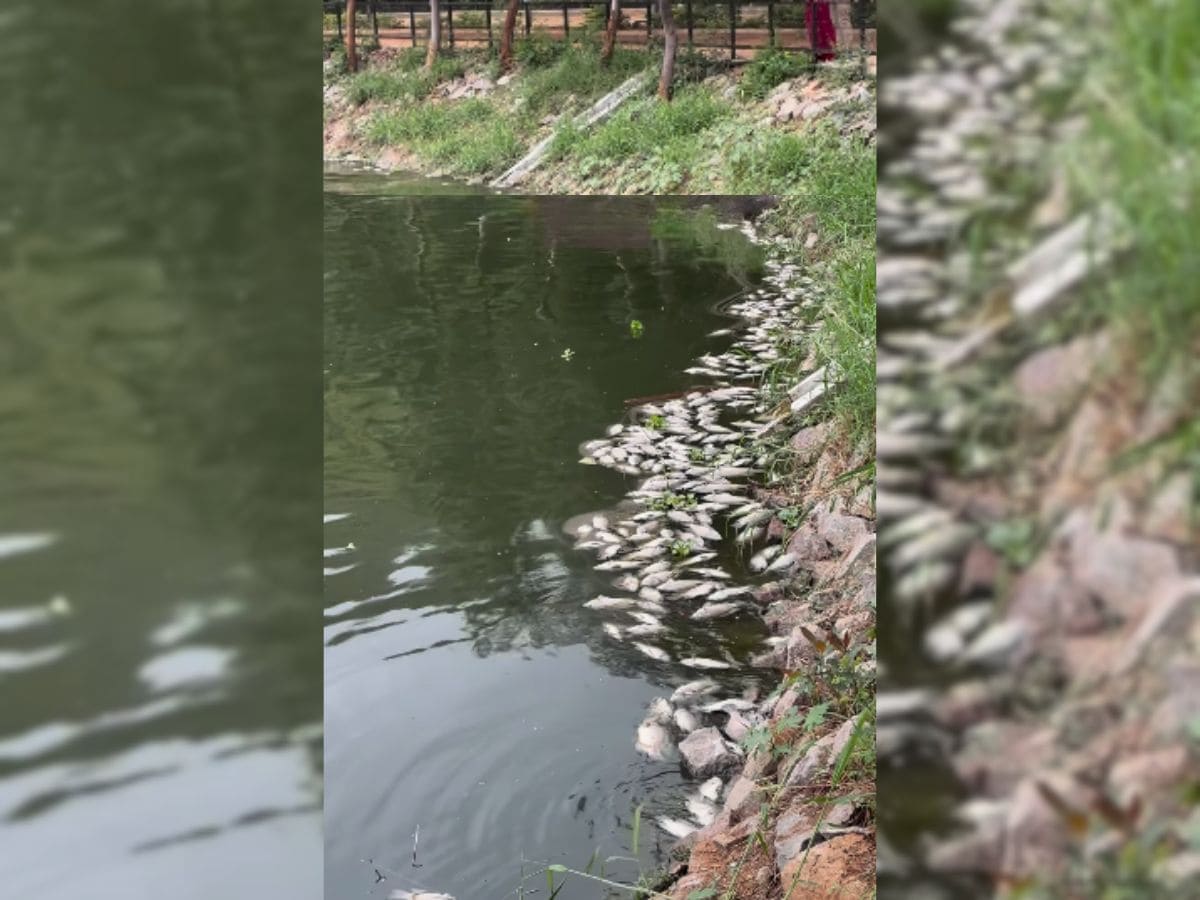
Hyderabad: The Telangana High Court on Friday, March 1, pulled up the Telangana government over a delay in implementing strategies to restore the Durgam Cheruvu lake, an essential tourist attraction in Hyderabad.
The HC has issued a two-week notice to the state to specify its action plan for the restoration of the Durgam Cheruvu lake after dead fish were found floating in it due to pollutants and sewage.
An expert committee, chaired by Atul Narayan Vaidya of NEERI, was recently appointed by the court to investigate the degradation of Durgam Cheruvu and propose effective restoration measures.
The panel does not include members of the Hyderabad Metropolitan Development Authority (HMDA) or the Telangana Pollution Control Board (PCB) as the High Court expressed no faith in them, accusing the bodies of being complicit in the deterioration of the Durgam Cheruvu Lake. The HC also warned them against attempting to influence the panel or stifle the probe.
While counsel for the state, presented a representation stating that the state was ready to implement the suggestions of the committee to restore the Durgam Cheruvu Lake, he stated that responses from various departments, including the PCB, on the suggestions were awaited, while it implemented short-term measures.
The court then urged the committee to ensure the measures are implemented on the ground.
The court has also noted the increased encroachments on the full tank level and buffer zones of the Durgam Cheruvu Lake and demanded answers for ways to remove them, aside from desilting the lake.
The court yet again expressed its dissatisfaction over the working of the PCB and stated that it would initiate action against it if did not take up necessary measures to restore the Durgam Cheruvu lake.
The case will now be taken up on March 11.
Studies of pollution
A scientific paper that was published in August 2023 by a team of researchers from the Civil Engineering departments of Mahindra University and IIT-Hyderabad, reported the amount of toxins in the lake. The report, ‘Non-Target Screening Of Organic Micropollutants In Durgam Cheruvu Lake, India’, stated that a total of 183 compounds that were identified from three sampling sites of the lake, including pharmaceuticals, metabolites, herbicides, fungicides, insecticides, pesticides, hormones, steroids, personal care products, plasticizers, and cyanotoxins among others.
More recently a sewerage treatment plant, at a cost of Rs 35 crore, was set up by the Hyderabad Metropolitan Water Supply and Sewage Board (HMWSSB). The pollution of the Durgam Cheruvu Lake is now raising doubts over the functioning of the other 31 sewage plants set up by the board across the GHMC at a total cost of Rs 3,866 crore.
What polluted Durgam Cheruvu?
Originally spanning over 150 acres, the Durgam Cheruvu Lake was built between 1518 and 1687 to supply water to Golconda Fort residents. It was revered for its reliability, even during a Mughal siege.
In the late 1950s, the area around the lake was pristine, but urbanisation gradually encroached upon its surroundings. By the 1970s, it was a popular spot for picnics and leisure activities. The early 2000s saw the AP government actively promoting tourism, and by 2001, it planned to expand boat services. It was then that the signs of encroachment and pollution emerged.
Despite court orders to protect the Durgam Cheruvu Lake, various measures failed. By 2007, sewage treatment plants were inaugurated, yet the lake continued to degrade. In 2008, allegations surfaced of encroachment by the Andhra Pradesh Industrial Infrastructure Corporation. By 2010, the lake faced a shrinking water spread due to waste dumping.
Throughout the 2010s, pollution escalated, aquatic life vanished, and sewage inundated residential areas during rains. Various plans to revitalise the lake, including clean-up initiatives and court orders, failed amid growing encroachments.
By 2015, encroachment reached alarming levels, leading to the suspension of boating activities. The Durgam Cheruvu Lake’s surroundings became a real estate hotspot, with proposed infrastructure developments.
In 2016, despite public outcry and protests, plans to construct a hanging bridge across the lake were approved. The ongoing encroachments and uncontrolled urbanization have led to the lake’s demise, signifying the tragic irony of urban development compromising natural treasures.
